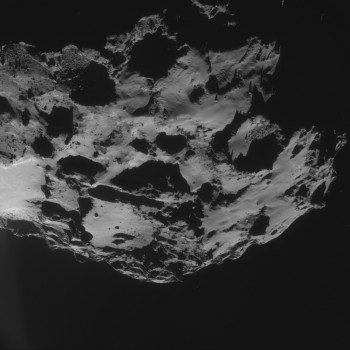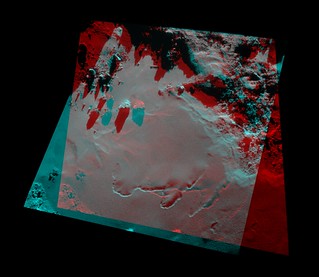If it is a barbell, and if it formed by the joining of two bodies, I might expect the two to be more loosely connected than if it formed by the erosion of one body. In that case, around the time of greatest activity near perihelion I might expect differing jet reaction forces across the nucleus to lead to shifts in one body perpendicular to the line joining the two. That should lead to cracks (like we appear to have seen already) opening or closing near the neck. Depending on the details of the gravitational field and connection of the two joined pieces, we might even see vibrational modes - periodic opening and closing of cracks.
I can't wait for perihelion...
I can't wait for perihelion...
If it started from one body but got to its current state, I'm thinking the tidal forces between the two lobes could be enough to cause cracking and movement at the neck.



